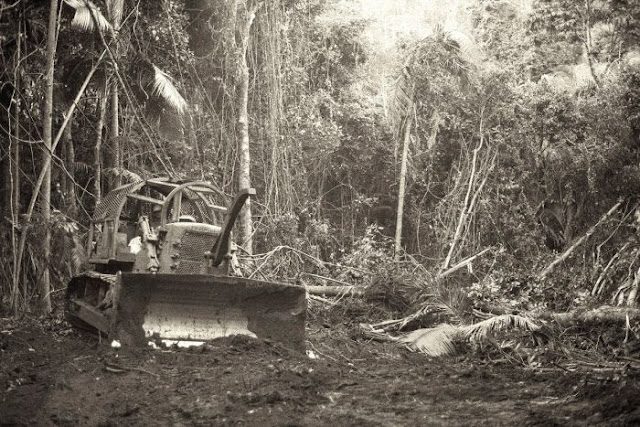It
has been 40 years since the first images emerged of protesters
blocking the path of bulldozers to stop the logging of rainforest at
Terania Creek on the New South Wales north coast.
The
protest is regarded as a watershed moment in Australia's
environmental movement and cited as the first time people physically
defended a natural resource.
While
the fight to save the rainforest reached its climax in August 1979,
the story began several years earlier when a young couple from
Melbourne moved to a single-room cabin bordering the rainforest in
Terania Creek.
Hugh
and Nan Nicholson said they were drawn to the incredible beauty of
the area and were shocked to learn the following year that the
Forestry Commission planed to clear-fell the forest.
"Our
involvement was very sudden, very abrupt," Mrs Nicholson said.
"We
had no experience, we were very young, but we felt we couldn't let
this go, we had to try to do something."
Over
the next four years, the Nicholsons said their efforts to halt the
logging escalated from writing letters and submissions and lobbying
politicians to hosting hundreds of protesters and being at the
coalface of the fight.
"We
found there were many other young people who had just moved to the
area and they also were appalled at the idea of this beautiful forest
being flattened," Mrs Nicholson said.
"So
we quite quickly got into a group that was going to fight it, and
that was the start of years and years of battle."
'Not
so peaceful' protest say loggers
While
the demonstrators' intentions were "non-violent, peaceful
protest", not everybody held to that ideal.
Death
threats were made and received by each side.
Even
though Hurfords Hardwood had nothing to do with the Terania logging
operation, the family's South Lismore mill was burnt to the ground.
The
company who held the licence for the coupe at Terania Creek was the
Standard Sawmilling Company from Murwillumbah.
John
Macgregor-Skinner, the production manager at the time, said the toll
from protests put an "astronomical" strain on his workers
and family.
"We
had tractors sabotaged, people threatened [with] chainsaws, trees
spiked, bridges sabotaged and the like," he said.
"From
a personal perspective, we received telephone calls to say that my
wife was going to get raped, they knew where the kids were going to
school and they weren't going to come home tomorrow.
PHOTO:
Loggers say protesters sabotaged equipment during the Terania Creek
protest. (Supplied: David Kemp)
"That
happened on several occasions to the point that we had police
protection and I had a direct line to the police inspector.
"Nothing
did eventuate, but by gee you don't know."
Mr
Macgregor-Skinner said the protest also had a detrimental impact on
jobs on the NSW north coast.
"Terania
Creek was only a very, very small part of our operations," he
said.
"But
what eventuated out of Terania Creek closed down the mill."
Mr
Macgregor-Skinner estimates 600 jobs were lost in the region when
Neville Wran, then New South Wales premier, made the historic
'rainforest decision' in October 1982, removing about 100,000
hectares of forest from timber production.
Legacy
of saving the 'big scrub'
Bundjalung
woman Rhoda Roberts was only young when the Terania Creek protests
took place, but she can remember her late father, Pastor Frank
Roberts, talking about the new arrivals who were eager to save the
environment.
She
said at the time traditional owners were living under the Protection
Act.
"We
didn't really have a voice. You've got to remember there were
curfews, they were taking kids.
 |
| PHOTO: Rhoda Roberts remembers her father talking about the significance of the Terania Creek protest. (Supplied) |
"People
were very frightened, so to have a group of people who arrived on
country and were determined to love that environment, from our
perspective, was incredibly new."
Ms
Roberts said the big scrub, which includes Terania Creek, is a
'storybook' place where knowledge is exchanged among generations.
"I'm
indebted now because my children and the coming children … when we
travel our territories, we still have a sample of land that we know
has been there since time immemorial," she said.
"I
pay my greatest respects to everyone who was involved in Terania
Creek because you saved country for us, and we are all benefiting
from that.".....
Read the full article with more images here.













